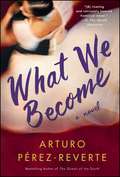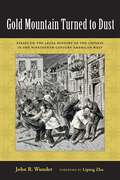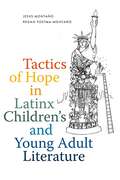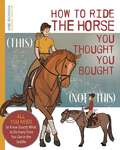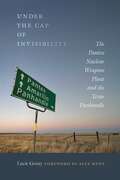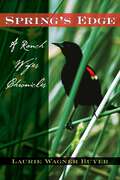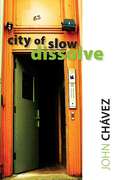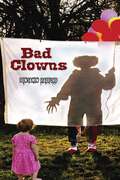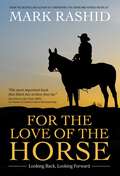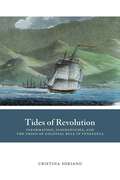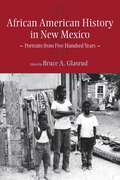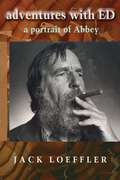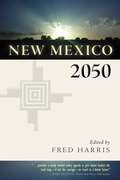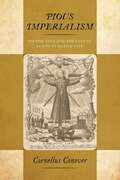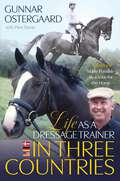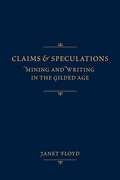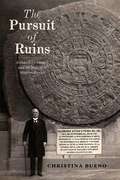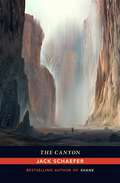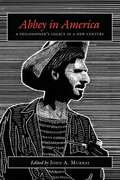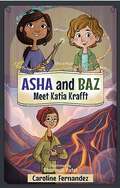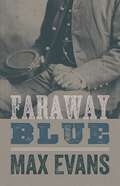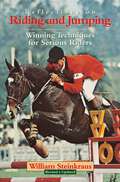- Table View
- List View
What We Become: A Novel
by Arturo Perez-Reverte“Pérez-Reverte summons the romantic spirit of an old black-and-white movie: impossibly glamorous, undeniably wistful.” – Kirkus Reviews (starred review) “An intoxicating entertainment, pulsing with life.”— Booklist (starred review) “Sparkling with witty dialogue, this elegantly translated thriller is enthusiastically recommended to sophisticated readers and those who wish to be.” – Library Journal (starred review)In 1928, aboard the Cap Polonio—a lavish transatlantic cruise ship bound for Buenos Aires—Max Costa locks eyes with Mecha Inzunza across the first-class ballroom. They are an unlikely match. He is a thief, sleek and refined, hired to dance with unaccompanied passengers. She is the elegant wife of an accomplished composer, accustomed only to luxury. But as they embrace in a fiery tango, a steamy and dangerous love affair ignites—following them from the ship’s gentle sways in the Atlantic night to the seedy decadence of Buenos Aires. Yet as quickly as their affair begins, the two lovers are torn apart. In Nice, 1937, Max and Mecha’s lives intersect for a second time and they rekindle their dalliance with ease. But in the wake of a perilous mission gone awry, Mecha looks after her charming paramour until a deadly encounter with a Spanish spy forces Max to flee. Decades later in Sorrento at the height of the Cold War, Max once again runs into trouble—and Mecha. Their attraction is undeniable but with KGB agents on Max’s trail, the small glimmer of hope is becoming increasingly dim. A mesmerizing tale of love and adventure, espionage and honor, What We Become is Arturo Pérez-Reverte at his finest, with elegant prose reminiscent of his beloved novel, The Club Dumas. Sweeping through time and across borders, What We Become proves that love, much like a great novel, is timeless and enduring.
Gold Mountain Turned to Dust: Essays on the Legal History of the Chinese in the Nineteenth-Century American West
by John R. WunderSome half million Chinese immigrants settled in the American West in the nineteenth century. In spite of their vital contributions to the economy in gold mining, railroad construction, the founding of small businesses, and land reclamation, the Chinese were targets of systematic political discrimination and widespread violence. This legal history of the Chinese experience in the American West, based on the author&’s lifetime of research in legal sources all over the West—from California to Montana to New Mexico—serves as a basic account of the legal treatment of Chinese immigrants in the West.The first two essays deal with anti-Chinese racial violence and judicial discrimination. The remainder of the book examines legal precedents and judicial doctrines derived from Chinese cases in specific western states. The Chinese, Wunder shows, used the American legal system to protect their rights and test a variety of legal doctrines, making vital contributions to the legal history of the American West.
Tactics of Hope in Latinx Children's and Young Adult Literature
by Jesus Montaño Regan Postma-MontañoUsing Gloria Anzaldúa&’s theories of conocimiento as a critical lens, the authors examine several literary works including Side by Side / Lado a lado; They Call Me Güero; Land of the Cranes; Efrén Divided; and Gabi, a Girl in Pieces.
Jesuit Student Groups, the Universidad Iberoamericana, and Political Resistance in Mexico, 1913-1979
by David EspinosaThe history of Mexico in the twentieth century is marked by conflict between church and state. This book focuses on the efforts of the Roman Catholic Church to influence Mexican society through Jesuit-led organizations such as the Mexican Catholic Youth Association, the National Catholic Student Union, and the Universidad Iberoamericana. Dedicated to the education and indoctrination of Mexico&’s middle- and upper-class youth, these organizations were designed to promote conservative Catholic values. The author shows that they left a very different imprint on Mexican society, training a generation of activists who played important roles in politics and education. Ultimately, Espinosa shows, the social justice movement that grew out of Jesuit education fostered the leftist student movement of the 1960s that culminated in the Tlatelolco massacre of 1968. This study demonstrates the convergence of the Church, Mexico&’s new business class, and the increasingly pro-capitalist PRI, the party that has ruled Mexico in recent decades.Espinosa&’s archival research has led him to important but long-overlooked events like the student strike of 1944, the internal upheavals of the Church over liberation theology, and the complicated relations between the Jesuits and the conservative business class. His book offers vital new perspectives for scholars of education, politics, and religion in twentieth-century Mexico.
How to Ride the Horse You Thought You Bought
by Anne BuchananA go-to reference and a launchpoint for every amateur hoping to grow her horsemanship abilities while doing right by her horse.In this fresh look at the fundamental skills needed when training and riding a horse, career educator and lifelong horsewoman Anne Buchanan provides crucial keys so the everyday horse enthusiast can:Decode how the horse functions.Become aware of crucial technicalities of riding that are often overlooked or bypassed.Grow a toolbox of training ideas so that every ride has meaningful and attainable goals.Easily recall what to do, when, during any ride.With the understanding that many riders yearn to beproductivewith their horses, Buchanan empowers them with well-researched and time-tested answers to the question, &“What should I do with my horse today?&” She also addresses the building blocks that must be in place so that this question can be answered in many ways, and all of them successful. These include:The &“Ground Rules&”—essential groundwork and communication skills.The six &“Nonnegotiables&” for good riding—Go, Get Connected, Stay Connected, Transitions, Flexion, and Half-Halt.Guidelines for learning on your own—how to carry on and grow your knowledge and skillset, independently when necessary.In addition, &“Study Guides&” throughout the book serve as easy-to-use &“formulas&” so readers can reconstruct what they've learned at any time. Buchanan employs mental tools the human brain uses to make sense of information to help readers engage with the material and:Familiarize them with the terminology, concepts, and skills needed for riding.Develop the confidence necessary to implement these concepts and skills when working with their horses.Help develop day-to-day and long-range plans to reach training and riding goals.Buchanan endeavors to translate the experience of riding into words so that readers can think like good riders think, feel what good riders feel, and do what good riders do. The result is the ability to recognize what is working, what isn't, what you need to do, and whether you achieve it—even when you are riding and training on your own. With engaging illustrations and links to helpful instructional videos throughout, this is both a go-to reference and a launchpoint for every amateur hoping to grow her horsemanship abilities while doing right by her horse.
Under the Cap of Invisibility: The Pantex Nuclear Weapons Plant and the Texas Panhandle
by Lucie GenayPantex was built during World War II near the town of Amarillo, Texas. The site was converted early in the Cold War to assemble nuclear weapons and produce high explosives. For nearly fifty years Pantex has been the sole assembly and disassembly plant for nuclear weapons in the United States. Today, most of the activities of the plant consist of the manufacture of high explosive components and the dismantlement or life extension of weapons, including retrofitting aging warheads in the United States&’s arsenal.Unlike the much more famous nuclear-weapons-production sites at Los Alamos, Oak Ridge, Hanford, and Rocky Flats, the Pantex plant has drawn little attention, hidden under a metaphoric &“cap of invisibility.&” Lucie Genay now lifts that invisibility cap to give the world its first in-depth look at Pantex and the people who have spent their lives as neighbors and employees of this secretive industry. The book investigates how Pantex has impacted local identity by molding elements of the past into the guaranty of its future and its concealment. It further examines the multiple facets of Pantexism—the reasons for embracing nuclear-weapons production as a solution to economic woes, the resulting dependence on this industry, and the unconditional support for the facility—through the voices of native and adoptive Panhandlers.
Spring's Edge: A Ranch Wife's Chronicles
by Laurie Wagner BuyerSpring's Edge reflects life during one season on the modern-day Colorado cattle ranch Laurie Buyer once called home. Her diary recounts the day-to-day toil and the challenge of trying to find time to write while continuing to help with outdoor chores, cooking, cleaning, balancing the books, and working for a neighboring ranch.Chronicling a time of deep personal change, Buyer struggles with her role as a ranch wife, faces the diminishing vitality of an agricultural way of life, and nurses her father through a terminal illness. Buyer tries to bridge the gap between the rural world she cherishes and the inevitable encroachment of urban sprawl. Meanwhile, her writing of landscape and weather, livestock and wildlife, loneliness and intimacy capture the innate rhythms of relationships, the resilience of love, and the astonishing beauty of life on the land.
City of Slow Dissolve (Mary Burritt Christiansen Poetry Series)
by John ChávezBefore recovery comes the preparation to recover. In City of Slow Dissolve, John Chávez takes readers through this journey—the &“slow dissolve,&” the unpacking and re-packing of self that must take place before healing can begin. Fusing language poetry, lyric, and narrative, Chávez uses syntactical play, rhythm, and repetition of key words and lines to lend immediacy to emotions and actions. He tips words and images on their heads and invites readers to reexamine people and places that are at once familiar and utterly unfamiliar.
Bad Clowns
by Benjamin RadfordBad clowns—those malicious misfits of the midway who terrorize, haunt, and threaten us—have long been a cultural icon. This book describes the history of bad clowns, why clowns go bad, and why many people fear them. Going beyond familiar clowns such as the Joker, Krusty, John Wayne Gacy, and Stephen King&’s Pennywise, it also features bizarre, lesser-known stories of weird clown antics including Bozo obscenity, Ronald McDonald haters, killer clowns, phantom-clown abductors, evil-clown panics, sex clowns, carnival clowns, troll clowns, and much more. Bad Clowns blends humor, investigation, and scholarship to reveal what is behind the clown&’s dark smile.
For the Love of the Horse
by Mark RashidA favorite storyteller sheds new light on the never-ending process of becoming better for the horse.Over 30 years ago, renowned horseman and popular storyteller Mark Rashid's first book,Considering the Horse, was published. In it he shared his experiences with horses and people, subtly delivering practical lessons in horsemanship and life in a conversational style that resonated with audiences around the world. Now Rashid considers all that has happened in the years that have passed since that first book was published—the transformative moments and impactful individuals who have helped shape his philosophies and methods since then. With his distinctive voice, he shepherds readers through topics of relevance in the equestrian industry while telling more of his life story, resulting in an engaging memoir-style read that remains rich in nuggets of wisdom that you can put right to work in your daily interactions with horses.InFor the Love of the Horse, Rashid explores:Ways he tried to find his own way of being with horses without actually knowing what he was looking for.How the art of aikido, and the teachers he had, changed his ideas about life and relationships outside the dojo.How it feels to be soft (and how it feels to not be), and how Rashid learned to stay true to the principles of softness as he understood them, regardless of the situation.How he broke out of the pattern of assigning human emotions and comprehension to horses.The impact neuroscientist Dr. Steve Peters had on Rashid's understanding of the horse's behaviors and responses and how they correlate to what is actually going on in the horse's brain.The power of observation and learning how to be still, even in the midst of activity.The difference between trying to connect with the horse versus allowing the horse to connect with you.How over time Rashid has shifted from trying techniques that alter a horse's behavior, to adjusting his own thoughts, emotions, and behaviors in order to help the horse feel safer.In his familiar way, Rashid takes readers on a journey that rewards with both adventure and education, finding new inroads in our attempts to become better company and fairer caregivers to horses. With his thoughtful lifetime of study leading by example, we are all encouraged to consider how far horsemanship has come and how bright its future might be.
Ch'orti'-Maya Survival in Eastern Guatemala: Indigeneity in Transition
by Brent E. MetzScholars and Guatemalans have characterized eastern Guatemala as "Ladino" or non-Indian. The Ch'orti' do not exhibit the obvious indigenous markers found among the Mayas of western Guatemala, Chiapas, and the Yucatán Peninsula of Mexico. Few still speak Ch'orti', most no longer wear distinctive dress, and most community organizations have long been abandoned. During the colonial period, the Ch'orti' region was adjacent to relatively vibrant economic regions of Central America that included major trade routes, mines, and dye plantations. In the twentieth century Ch'orti's directly experienced U.S.-backed dictatorships, a 36-year civil war from start to finish, and Christian evangelization campaigns, all while their population has increased exponentially. These have had tremendous impacts on Ch'orti' identities and cultures.From 1991 to 1993, Brent Metz lived in three Ch'orti' Maya-speaking communities, learning the language, conducting household surveys, and interviewing informants. He found Ch'orti's to be ashamed of their indigeneity, and he was fortunate to be present and involved when many Ch'orti's joined the Maya Movement. He has continued to expand his ethnographic research of the Ch'orti' annually ever since and has witnessed how Ch'orti's are reformulating their history and identity.
Tides of Revolution: Information, Insurgencies, and the Crisis of Colonial Rule in Venezuela (Diálogos Series)
by Cristina SorianoThis is a book about the links between politics and literacy, and about how radical ideas spread in a world without printing presses. In the late eighteenth and early nineteenth centuries, Spanish colonial governments tried to keep revolution out of their provinces. But, as Cristina Soriano shows, hand-copied samizdat materials from the Caribbean flooded the cities and ports of Venezuela, hundreds of foreigners shared news of the French and Haitian revolutions with locals, and Venezuelans of diverse social backgrounds met to read hard-to-come-by texts and to discuss the ideas they expounded. These networks efficiently spread antimonarchical propaganda and abolitionist and egalitarian ideas, allowing Venezuelans to participate in an incipient yet vibrant public sphere and to contemplate new political scenarios. This book offers an in-depth analysis of one of the crucial processes that allowed Venezuela to become one of the first regions in Spanish America to declare independence from Iberia and turn into an influential force for South American independence.
African American History in New Mexico: Portraits from Five Hundred Years
by Bruce A. GlasrudAlthough their total numbers in New Mexico were never large, blacks arrived with Spanish explorers and settlers and played active roles in the history of the territory and state. Here, Bruce Glasrud assembles the best information available on the themes, events, and personages of black New Mexico history.The contributors portray the blacks who accompanied Cabeza de Vaca, Coronado and de Vargas and recount their interactions with Native Americans in colonial New Mexico. Chapters on the territorial period examine black trappers and traders as well as review the issue of slavery in the territory and the blacks who accompanied Confederate troops and fought in the Union army during the Civil War in New Mexico. Eventually blacks worked on farms and ranches, in mines, and on railroads as well as in the military, seeking freedom and opportunity in New Mexico&’s wide open spaces. A number of black towns were established in rural areas. Lacking political power because they represented such a small percentage of New Mexico&’s population, blacks relied largely on their own resources and networks, particularly churches and schools.
Adventures with Ed: A Portrait of Abbey
by Jack LoefflerNo writer has had a greater influence on the American West than Edward Abbey (1927-89), author of twenty-one books of fiction and nonfiction. This long-awaited biographical memoir by one of Abbey's closest friends is a tribute to the gadfly anarchist who popularized environmental activism in his novel The Monkey Wrench Gang and articulated the spirit of the arid West in Desert Solitaire and scores of other essays and articles. In the course of a twenty-year friendship Ed Abbey and Jack Loeffler shared hundreds of campfires, hiked thousands of miles, and talked endlessly about the meaning of life. To read Loeffler's account of his best pal's life and work is to join in their friendship.Born and raised in Pennsylvania, Abbey came west to attend the University of New Mexico on the G.I. Bill. His natural inclination toward anarchism led him to study philosophy, but after earning an M.A. he rejected academic life and worked off and on for years as a backcountry ranger and fire lookout around the Southwest. His 1956 novel The Brave Cowboy launched his literary career, and by the 1970s he was recognized as an important, uniquely American voice. Abbey used his talents to protest against the mining and development of the American West. By the time of his death he had become an idol to environmentalists, writers, and free spirits all over the West.Ed Abbey and Jack Loeffler were like Don Quijote and Sancho Panza. Loeffler delivers his friend, warts and all on a platter full of reverence and irreverence and carefully researched factual information, interspersed with hearty laughter and much serious consideration of all life's Great Questions. Jack's story elucidates and demythifies the Abbey legend, giving us powerful flesh and blood instead.--John Nichols
New Mexico 2050
by Fred HarrisHere some of the state&’s most noted and qualified policy experts answer two vital questions: New Mexico 2050—What can we be? What will we be? They have produced in this volume, edited by former US Senator Fred Harris, a dynamic blueprint for New Mexico&’s future—a manual for leaders and public officials, a text for students, a sourcebook for teachers and researchers, and a guide for citizens who want the Land of Enchantment to also become the Land of Opportunity for all.Contributors include economists Lee Reynis and Jim Peach, education policy expert Veronica García, health and health care specialist Nandini Pillai Kuehn, political scientists Gabriel Sánchez and Shannon Sánchez-Youngblood, Native American scholar Veronica Tiller, icon of New Mexico cultural affairs and the arts V. B. Price, authorities on water and the environment Laura Paskus and Adrian Oglesby, planning specialist Aaron Sussman, and inaugural Albuquerque poet laureate Hakim Bellamy.Digital versions of individual chapters allow interested readers to explore the key issues impacting the state of New Mexico.
Pious Imperialism: Spanish Rule and the Cult of Saints in Mexico City
by Cornelius ConoverThis book analyzes Spanish rule and Catholic practice from the consolidation of Spanish control in the Americas in the sixteenth century to the loss of these colonies in the nineteenth century by following the life and afterlife of an accidental martyr, San Felipe de Jésus. Using Mexico City–native San Felipe as the central figure, Conover tracks the global aspirations of imperial Spain in places such as Japan and Rome without losing sight of the local forces affecting Catholicism. He demonstrates the ways Spanish religious attitudes motivated territorial expansion and transformed Catholic worship. Using Mexico City as an example, Conover also shows that the cult of saints continually refreshed the spiritual authority of the Spanish monarch and the message of loyalty of colonial peoples to a devout king. Such a political message in worship, Conover concludes, proved contentious in independent Mexico, thus setting the stage for the momentous conflicts of the nineteenth century in Latin American religious history.
Life As a Dressage Trainer in Three Countries
by Gunnar OstergaardA delightfully entertaining journey following the lifelong development of a devoted horseman, and the opportunities and challenges native to such a pursuit in different parts of the world.It was at the age of thirteen that Gunnar Ostergaard wrote in his journal, &“Is there anything more beautiful than horses?&” The rhetorical question would come to guide his every step as he sought a way to build a life around that which he loved most. What transpired was a journey through three lands and cultures, each providing a different window into the body and mind of the horse and the heart and soul of the horseman. In these pages he traces his path from Denmark to Germany to the United States, providing a glimpse into the world of rider development in three vastly different places, as well as a rare peek behind the curtain of top international dressage training and competition. Throughout, Gunnar is funny and frank, generously sharing both his struggles and successes. The result is a highly entertaining history lesson that is at the same time rich in equestrian philosophy readers can immediately apply to their own riding lives.
Claims and Speculations: Mining and Writing in the Gilded Age
by Janet FloydMines have always been hard and dangerous places. They have also been as dependent upon imaginative writing as upon the extraction of precious materials. This study of a broad range of responses to gold and silver mining in the late nineteenth century sets the literary writings of figures such as Mark Twain, Mary Hallock Foote, Bret Harte, and Jack London within the context of writing and representation produced by people involved in the industry: miners and journalists, as well as writers of folklore and song.Floyd begins by considering some of the grand narratives the industry has generated. She goes on to discuss particular places and the distinctive work they generated—the short fictions of the California Gold Rush, the Sagebrush journalism of Nevada&’s Comstock Lode, Leadville romance, and the popular culture of the Klondike.With excursions to Canada, South Africa, and Australia, Floyd looks at how the experience of a destructive and chaotic industry produced a global literature.
The Pursuit of Ruins: Archaeology, History, and the Making of Modern Mexico (Diálogos Series)
by Christina BuenoFamous for its majestic ruins, Mexico has gone to great lengths to preserve and display the remains of its pre-Hispanic past. The Pursuit of Ruins argues that the government effort to take control of the ancient remains took off in the late nineteenth century during the dictatorship of Porfirio Díaz. Under Díaz Mexico acquired an official history more firmly rooted in Indian antiquity. This prestigious pedigree served to counter Mexico&’s image as a backward, peripheral nation. The government claimed symbolic links with the great civilizations of pre-Hispanic times as it hauled statues to the National Museum and reconstructed Teotihuacán. Christina Bueno explores the different facets of the Porfirian archaeological project and underscores the contradictory place of indigenous identity in modern Mexico. While the making of Mexico&’s official past was thought to bind the nation together, it was an exclusionary process, one that celebrated the civilizations of bygone times while disparaging contemporary Indians.
The Canyon (Zia Books)
by Jack SchaeferBased on a Cheyenne legend, this novel holds universal appeal as it explores the theme of a man&’s conflict with his culture. It is the story of how Little Bear, a Cheyenne warrior who opposes war, reconciles the conflict between his personal values and the demands of his tribe. The dilemma faced by Little Bear gives rise to a story that is at once a compelling adventure tale, an authentic description of Indian life and ritual, and a parable of self-realization.First published in 1953, The Canyon remained one of Schaefer's personal favorites. This new release will be welcomed by Schaefer&’s enduring admirers and by new Western literature enthusiasts. It is a classic not to be missed.
The Pancake Stories: Cuentos del Panqueque
by Peggy Pond ChurchChildren and their parents and grandparents will love these stories of family life, entitled The Pancake Stories because they begin with Timothy Taylor&’s adventure in making breakfast for his parents. Peggy Pond Church, one of the great New Mexico authors of the twentieth century, wrote these stories for her own sons in the 1930s, and her daughter-in-law Elizabeth Church created the illustrations in the 1950s. Now at last they are published, both in the original English and in Noël Chilton&’s Spanish translation.All the Pancake Stories are about Timothy Taylor and his family: his mother, his father, and his eccentric aunties. A horse who goes to the movies, a cat who has too many kittens, and a dog who makes everyone laugh are all part of Timothy&’s world. Read these stories aloud. They will remind you how much fun it is to be a child.
Abbey in America: A Philosopher's Legacy in a New Century
by John A. MurrayMore than twenty-five years after his death, iconic writer and nature activist Edward Abbey (1929–1989) remains an influential presence in the American environmental movement. Abbey&’s best known works continue to be widely read and inspire discourse on the key issues facing contemporary American society, particularly with respect to urbanization and technology. Abbey in America, published forty years after Abbey&’s popular novel The Monkey Wrench Gang, features an all-star list of contributors, including journalists, authors, scholars, and two of Abbey&’s best friends as they explore Abbey&’s ideas and legacy through their unique literary, personal, and scholarly perspectives.
Asha and Baz Meet Katia Krafft (Asha and Baz)
by Caroline FernandezIn the fourth book in the Asha and Baz series, readers learn about volcanoes from renowned volcanologist Katia Krafft!Asha wants to win a super cool volcanic rock by solving the Great Volcano Challenge at school. So she and her best friend Baz use their magic stick to travel to Iceland in 1973 to learn from famous volcano researcher Katia Krafft.She's sure to be able to help them with their project, but she's got an eruption to observe and data to record—and ash, lava, and smelly gases are a lot more scary than a classroom. With safety concerns rising, Asha and Baz will need to keep their cool to get back home and win the prize.
Faraway Blue
by Max EvansFirst published in 1999, Faraway Blue is based on the real-life exploits of Sergeant Moses Williams, former slave, Civil War veteran, and Buffalo Soldier in the Ninth Cavalry Regiment. Included in Moses's story are four women and two men representing the ethnic groups and economic levels found in the late 1800s American Southwest.At the story's opening, Williams's cavalry unit has one assignment: kill Apaches in the faraway blue mountains of southwestern New Mexico Territory, also known as the Black Range. As a fighter in the white man's campaign to obliterate the Indians and take over their lands, Williams finds a nemesis in Nana, an old Warm Springs Apache warrior who is a tactical genius. Nana leads his small band of followers to repeatedly strike area mining camps and settlements. Both men know they must meet before the end of the war and a maddening cat-and-mouse pursuit ensues. ;Williams is sustained by his love for Sheela Jones, a mulatto whom he wants to marry when the army will allow it. But Sheela's love for him guides her to take an immense risk just as Williams and Nana ride out to settle their score.Evans paints marvelous word pictures of a land and people he knows extremely well. - Booklist As always with Evans, written with a good sense of the times and place. - Kirkus
Reflections on Riding and Jumping
by William SteinkrausA revised and updated edition of a classic work on horses and horsemanship by one of the most acclaimed riders in show jumping history.
